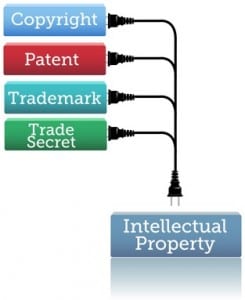 China’s reputation for intellectual property is not good. It’s probably one of the first countries you think of when someone mentions pirate DVDs, or fake Louis Vuitton handbags – and with good reason.
China’s reputation for intellectual property is not good. It’s probably one of the first countries you think of when someone mentions pirate DVDs, or fake Louis Vuitton handbags – and with good reason.
It’s easy to blame Chinese business ethics and law, but the real picture is more complicated. There are tools and processes to protect intellectual property in China. Unfortunately, many companies, don’t use these tools consistently.
Whether you want to sell to the Chinese market or source from Chinese manufacturers, it pays to know the basics. Then you can assess the risks for your own intellectual property, and how to handle them.
Here’s some key points from Hornet’s experience.
IP Protection is local
Patents and trademarks in Australia, New Zealand, the US or Europe are not applicable in China. To protect your intellectual property in China, you need Chinese patent, trademark and copyright registration.
This can be challenging as you have to deal with new processes and regulations – all in a foreign language. Hornet have our own offices in China, with local staff. They’re available to assist clients if necessary.
For patents in particular, it’s worth finding out what already exists in China. There are many Chinese companies creating products for their own domestic market who have filed patents in China only. This is where Apple’s IP problems with Siri stem from.
Patents in China are time-sensitive
Chinese regulations require China patents to be filed within one year of the patent having been filed elsewhere. Patent protection may not be available, unless you are a startup!
If you don’t register your trademark, someone else might
China is a first-file country. So if someone else registers your trademark before you do, they have the rights to it within China.
Don’t rely on the fact that your brand is less well-known. There are a lot of people in China and it only needs one of them! They might like your trademark, or to think it fits well in your market, or decide to use that mark to sell to the Chinese domestic market.
You also run the risk of someone registering your trademark in the hope that they can sell it to you later, or obtain a financial settlement. This happened to electric car manufacturer Tesla. New industries and high growth companies face higher risk of this.
The biggest risk to your intellectual property in China is often your partners in China
While some IP can be copied by an outsider with minimal effort, some requires more effort. Chinese companies you work with have more opportunity to reverse engineer your product. They can analyse material composition, or disassemble components. You may also have supplied specifications, documentation and so on. It is vital that you choose partners carefully.
Non-disclosure agreements (NDAs) should be used before any confidential information is shared with potential suppliers. The NDA should be tightly drafted, with specific attention to subcontractors. If you allow IP to be shared with sub-contractors, make sure they are equally bound by non-disclosure.
For sensitive products, you may want a larger than usual pool of potential suppliers. This means you still have options if careful investigations identify concerns.
When you do select one or more suppliers, use tightly worded agreements and contracts. These support local Chinese intellectual property protection, they don’t replace it. In addition to confidentiality, you need to address:
- Non-use. The aim is to prevent the Chinese supplier using your IP to provide similar products to your competitors. Identify the applicable intellectual property and limit the use of it to manufacturing for you. If possible, restrict the supplier from making your product (or anything similar) under another trademark.
- Non-circumvention. Your supplier must agree not to approach your customers or target customers directly.
Another strategy Hornet have used with success is to split the manufacturing process across a number of suppliers. This can be as simple as two manufacturers and one ‘pure assembly’ supplier. The key benefit is that no one supplier has the complete intellectual property to compete with you. The supply chain may be more complex, but because Chinese costs are lower it is still cost-effective overall.
***
It is up to every company to weigh the costs and benefits of intellectual property protection. There are many factors to consider. The value of your trademark. The value of the product IP. How easy your product or IP is to copy. Product lifecycle – if you’re in an industry where fashions change, speed to market may matter more than IP.
In Hornet’s experience, the most important step you can take is to realise that Australian law does not apply in China. Investigate, weigh up risk, and if you have any concerns, talk to us. We have a few years of experience we can draw on to help you!
